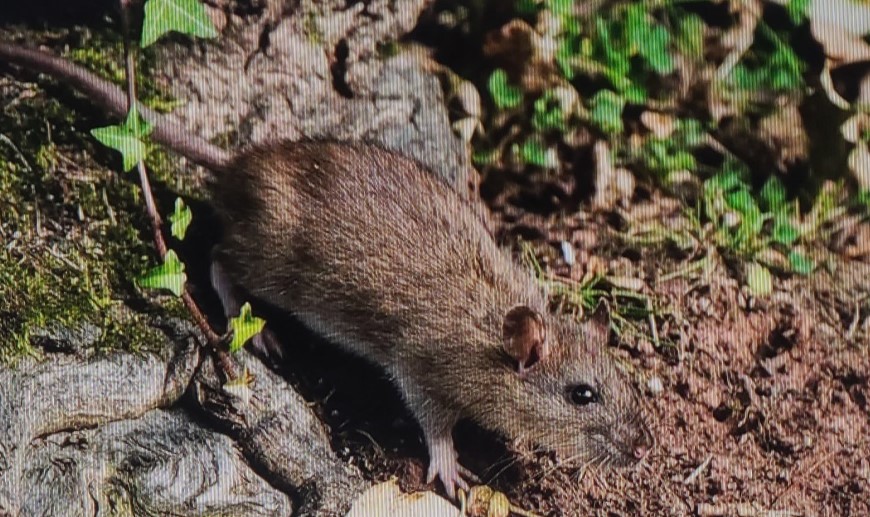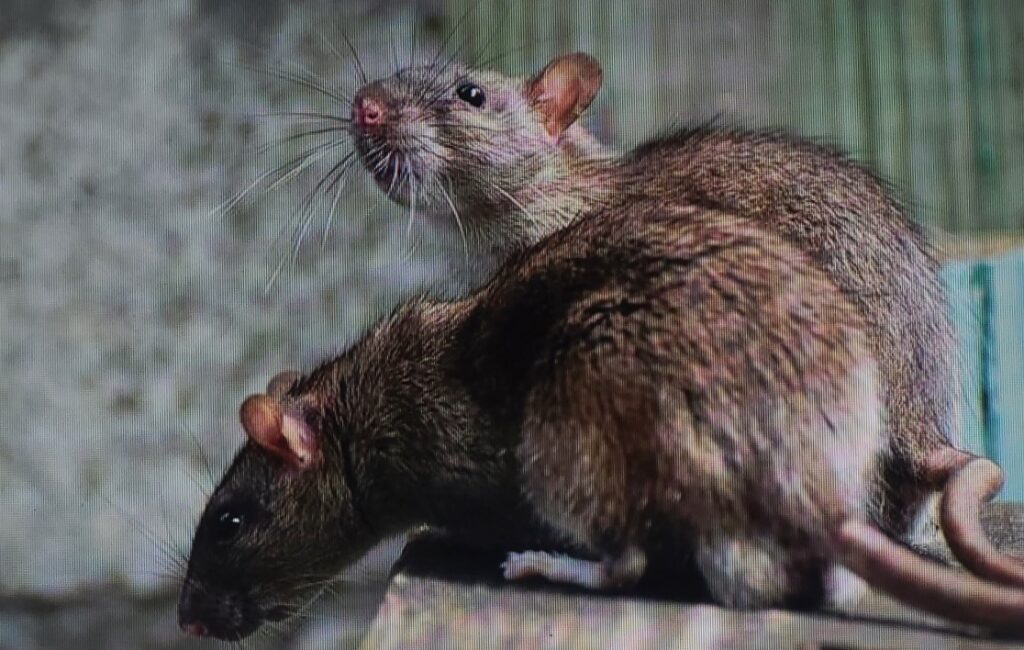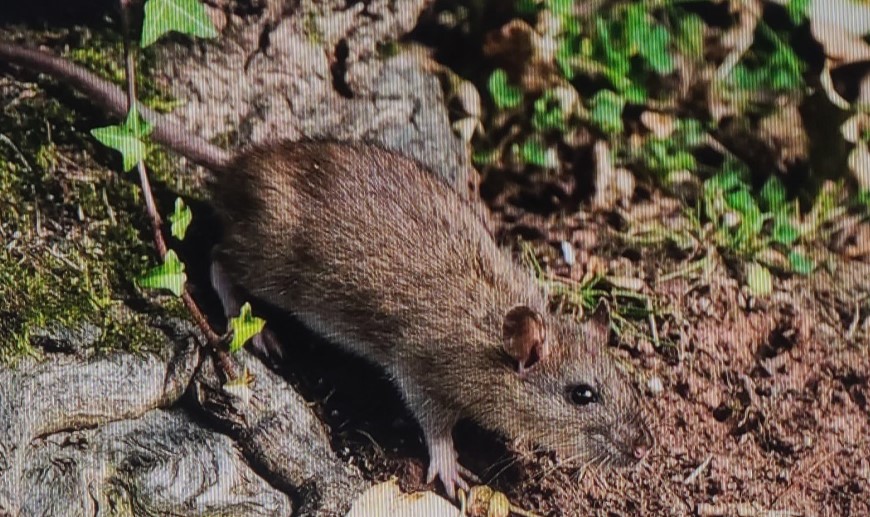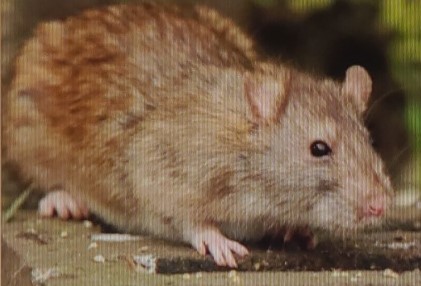
Norway Rat: (Rattus norvegicus)
Norway rats (rattus norvegicus), also known as the brown rat, barn rat, sewer rat, house rat or the wharf rat; is a member of the muridae family. They average 10 inches long with its tail being similar in length, weighing between 9 to 12 ounces, although the males are usually larger than the females.
Norway rats have coarse fur, that is dark brown or dark reddish gray. Its under – parts are whitish gray or light brown. The have small eyes, its ears and tail are bare and 4 toes on their front feet and 5 on their back feet.Norway rats are found throughout the World, including Florida. They live in close proximity with people and can be found in and around residences, cellars, warehouses, stores, slaughterhouses, garbage dumps, docks and in sewers. They can also be found in barns, granaries, livestock structures, silos and kennels. Basically any location that provides shelter, food and water, although they tend to inhibit lower floors of multistory buildings.
Norway rats will consume almost any kind of foods, although they primarily consume grains, seeds, fruits, stems, leaves, nectar, flowers, roots, bark, wood, sap, insects, spiders, crayfish, salamanders, fish, earthworms, frogs, birds, eggs, lizards and fungus.
Norway rats are not solitary, their burrows or nests consist of a large colony, that will hunt, breed and defend their territory together. They are social animals, and create social hierarchies. Much like dogs, rats establish an order of hierarchy, so one rat is dominant over another one, with each one having its place in the pack. They also form family groups which includes both male and female. They are mainly nocturnal, but can be seen during the day. They are also great swimmers both above the water and underwater, they are also capable of climbing objects. Their average life span is about 2 to 3 years. Norway rats dig well, and excavate extensive burrows, creating multiple levels of passageways, runways and tunnels, usually having two ways of entering and exiting the burrow. They generally burrow and nest adjacent to structures or objects, which can be under buildings, beneath concrete slabs, along stream banks, around ponds, sewers and in your attic. Their average life span is about 2 to 3 years. Norway rats are very territorial. They will fluff up their hair, hiss, squeal and move their tails around when defending its territory. Rats can also produce ultrasonic sounds in response to predators or potential danger; the frequency and duration of such cries depends on the sex and reproductive status of the rat. When playing they produce short high frequency ultrasonic sounds known as chirping, although the chirping is too high pitched for humans to hear. They can produce noises, which can be heard by humans. Norway rats can breed as young as 3 months old, but the males tend to wait until they can challenge the alpha male. Rats are capable of breeding throughout the year, usually breeding and giving birth during spring and autumn. They can have 1 to 12 litters a year, normally they have 6 to 8 litters a year. The average litter size is between 2 to 7 young, but in some extreme cases they can have up to 22 young in a single litter. Their gestational period lasts approximately 21 to 26 days. When the young are born they are blind and fur-less and completely dependent on their mother. They communicate with their mother by using several different types of ultrasonic sounds or cries, though when they reach 14 days they dramatically decrease these cries when male rats are present as a defensive tactic. Within 14 to 17 days their eyes will open and are completely weaned by three weeks old.
Norway rats are known to carry numerous diseases such as, Weils disease, ratite fever, viral hemorrhagic fever, Q – fever, cryptosporidiosis, hanta-virus pulmonary syndrome and murine typhus which can be transmitted to humans and livestock. They also carry parasites like toxoplasma gondii which can be passed to humans from cats feeding off an infected rat.
Norway rats cause damage to electrical wiring, walls, insulation and concrete slabs, when they burrow or nest in, near or around structures including your home; causing foul orders from defecating and urinating and in some cases, when their young die.


